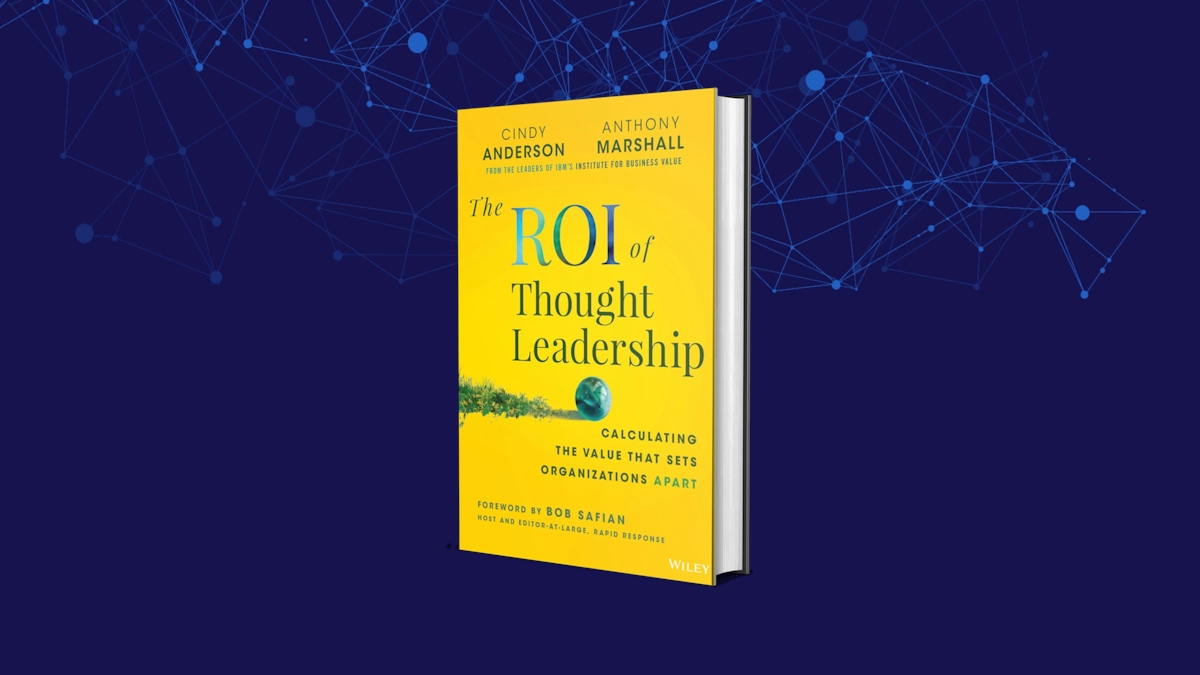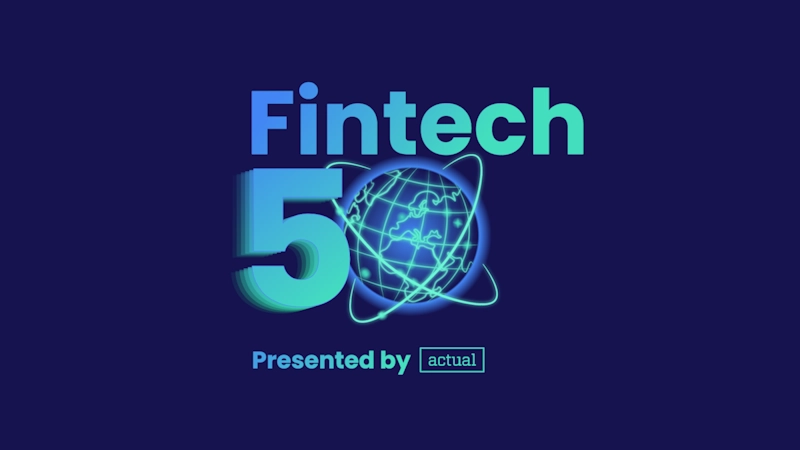Book Review: The ROI of Thought Leadership

I just finished reading "The ROI of Thought Leadership: Calculating the Value that Sets Organizations Apart" by Cindy Anderson and Anthony Marshall.
This book represents a groundbreaking empirical study that quantifies the business value of thought leadership. Based on rigorous research involving over 4,000 C-level executives from 14 countries, the book reveals that thought leadership delivers an impressive 156% return on investment—16 times greater than typical marketing campaigns.
The Authors and Their Credentials
Cindy Anderson serves as the Chief Marketing Officer and Global Lead for Engagement & Eminence at IBM's Institute for Business Value (IBV). She oversees a team of 30 editors, designers, and social media marketers and is a founding board member of the Global Thought Leadership Institute at APQC. Anderson has extensive experience in thought leadership strategy, diversity research, and project management, having previously served as Vice President of Brand Management at the Project Management Institute.
Anthony Marshall is the Senior Research Director of Thought Leadership at IBM's Institute for Business Value and Chair of the Board of Advisors for the Global Thought Leadership Institute. He leads a global team of 60 technology and industry experts, statisticians, economists, and analysts, providing direction for approximately 100 thought leadership studies annually. Marshall has over two decades of experience in strategic intelligence and has authored numerous studies on AI adoption, sustainability transformation, and competitive strategy.
Key Research Findings
The book's central revelation stems from a comprehensive double-blind survey conducted by Anderson and Marshall, which discovered several critical insights about thought leadership consumption and impact:
Executive Engagement: 88% of CEOs in the U.S. regularly engage with thought leadership, spending approximately two hours weekly consuming this content. The research found that 87% of executives reported making specific purchase decisions in the last 90 days directly influenced by thought leadership they consumed.
Financial Impact: The study revealed that companies with average revenues of $29 billion typically see $184 million annually in direct spending influenced by thought leadership consumption. When including indirect impact, some organizations experience over a billion dollars in yearly influence. Even using conservative estimates, this translates to the remarkable 156% ROI figure.
Global Market Influence: Anderson and Marshall calculate that thought leadership drives approximately $265 billion in global corporate spending annually, representing a massive market opportunity for organizations that can effectively produce and distribute quality content.
The Thought Leadership Framework
The book establishes a clear definition of thought leadership as "distinctive, evidence-based intelligence that gives leaders the insights they need to make better business decisions." This definition emphasizes the importance of building trust and credibility through independent, high-quality research and analysis.
Three Primary Value Levers
The authors identify three critical dimensions that drive thought leadership effectiveness:
Quality: Credible research findings and key messages that demonstrate deep expertise and analytical rigor. The most valuable thought leadership combines expertise with proprietary, original data that executives cannot obtain elsewhere.
Uniqueness: Content that offers distinctive perspectives and novel insights, setting the organization apart from competitors. This includes presenting evidence-based intelligence that challenges conventional thinking and provides actionable recommendations.
Reach: The ability to effectively distribute content and engage with target business leaders across appropriate channels. This involves building relationships with media, leveraging ecosystem partners, and ensuring content reaches decision-makers when they need it most.
Independence and Trust as Critical Factors
The research identified two variables as most statistically significant in determining ROI: independence and trust. Organizations that produce thought leadership perceived as independent from sales and marketing activities achieve dramatically higher returns. Content viewed as marketing collateral or sales material significantly reduces its effectiveness and ROI potential.
Essential Organizational Elements
For me, one of the book's most practical contributions is the framework for how to build thought leadership capabilities within organizations and how to structure the teams.
Idea Lab: This represents a cross-functional team responsible for conceiving content ideas that align with both business priorities and current market developments. The idea lab serves as the strategic hub where concepts and themes are developed based on business intelligence, market trends, and client needs. This group ensures that thought leadership content addresses relevant industry challenges and supports organizational objectives.
Research and Analytics Hub: Anderson and Marshall emphasize that the differentiating factor of thought leadership versus other content types is its foundation in substantive data and insights. Organizations need dedicated capability for data gathering, whether through conducting original primary research, partnering with external research organizations, or performing sophisticated analysis of secondary and tertiary data sources. This function provides the empirical backbone that gives thought leadership its credibility and authority.
Strategy Squad and Steering Committee: The authors recommend establishing a senior leadership group that understands both internal business objectives and external client needs. This "strategy squad" ensures alignment between thought leadership initiatives and organizational strategy while building executive buy-in at the highest levels. The steering committee helps maintain the critical balance between commercial objectives and content independence.
Strategic Business Implications
The underlying research demonstrates that thought leadership functions as what the authors term "the ace of marketing"—delivering returns 16-17 times greater than typical marketing campaigns. This positions thought leadership not as a cost center but as a critical revenue driver that deserves substantial organizational investment and support.
The book emphasizes that successful thought leadership requires:
- Sustained organizational commitment and leadership support
- Investment in research capabilities and original data collection
- Strategic alignment between content and business objectives
- Robust distribution and promotion strategies
- Measurement systems to track and optimize performance
Impact on Business Decision-Making
The research reveals thought leadership's profound influence on executive behavior. Beyond the 87% of executives who made recent purchase decisions based on thought leadership, the study found that high-quality content leads 75% of business leaders to research products or services they weren't previously considering. Among this group, 60% realized their organization was missing significant business opportunities.
This influence extends throughout the entire business buying process, from initial awareness and perception building to final conversion and pricing decisions. Organizations producing excellent thought leadership can command premium pricing, win higher deal volumes, and achieve market share leadership more effectively than competitors.
Conclusion
To me, "The ROI of Thought Leadership" represents a watershed moment for the PR/Comms industry, providing the first comprehensive, data-driven analysis of thought leadership's business value. Anderson and Marshall's research transforms thought leadership from an intuitive marketing activity into a quantifiable business strategy with measurable returns.
The book's combination of rigorous research methodology, practical frameworks, and actionable tools makes it a must-read for anyone in PR/Comms who advise leadership, as well as senior executives seeking to understand and optimize their organization's thought leadership investments.
By demonstrating that well-executed thought leadership can deliver 156% ROI while influencing billions in corporate spending, Anderson and Marshall have established the business case for treating thought leadership as a critical competitive differentiator in the modern economy.
As an agency that focuses on B2B Technology, the team at Actual Agency is ready to help you deliver media coverage, thought leadership and market-leading commentary about the impact of technology on business transformation. If you are looking for a B2B Tech PR agency that delivers results, contact the Actual Agency team today!




